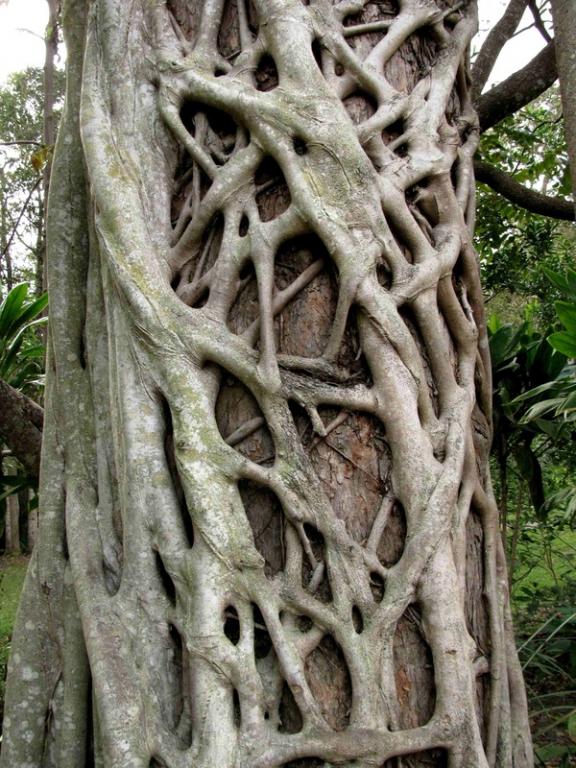
Here are some further notes from the northern Queensland rainforest near Cairns:
The rainforest can seem tranquil, quiet, and serene. Despite the relative silence, though, there is a constant battle for survival going on throughout the forest. (As a sign standing alongside one of the pathways said, “It’s a jungle out there.”)
In the rainforest, light means life. Without it, no photosynthesis. Without photosynthesis, no energy for growth and reproduction. Instead, death. And so, for millions and millions of years, the plants in the jungle have competed with one another for access to the sun’s rays.
The dense and closed canopy formed by the larger trees of the rainforest frequently starves the forest floor below of as much as 99% of the available light. This has forced other plants to develop some pretty amazing adaptations in order to survive.
For example, the “Strangler Fig” actually grows from the top down rather than from the ground up. How can that be? What does it mean?
Here’s how it goes: The fruit of the Strangler Fig is eaten by rainforest-dwelling birds and bats, who then excrete the seeds from their perches high in the branches of a tall tree. Many of those seeds remain at that elevated location. So now, with direct access to sunlight high up in the forest, the Strangler Fig seeds grow on the surface of the host tree — that is, on the tree that the Strangler Fig (note that ominous name!) will use as a support. The Strangler Fig’s long roots grow downward, along the trunk of the host tree, in order to reach the forest floor. Eventually, they fuse together and envelop the host. As a result, the Strangler Fig prospers and thrives. The host tree? Perhaps not so much.
To take another example: The Lawyer Cane (also known, meaningfully, as Wait-a-While), produces prickly leaves and spikey tendrils that grab hold of taller plants in the neighborhood so that it can hoist itself higher and higher toward the sunlight, breaking through the thick rainforest canopy. Those leaves and tendrils then send nutrients down to the parent plant, sitting on the dark forest floor far below.
The woody stems of the Lawyer Cane can grow up to 200 meters in length — which is nearly 660 feet long. They’re also both quite flexible and very strong, which is why they’re commonly used in the manufacture of rattan or cane chairs and tables and other such furniture.
Posted from Sydney, New South Wales, Australia










